
© Dance UK. (Click image for larger version)
or see the complete 3 page pdf version which includes the schedule for the day.
www.danceuk.org
www.danceuk.org/choreographers
In dance we’d be nowhere without choreographers and their visions – they push the art form forwards. But it’s a lonely calling and there is little support for what can often be an exposing and high-pressured career. Back in 2002, Dance UK started its Choreoforum as a way of drawing choreographers together to learn from each other, discuss best practice and network. 11 years on, and a change of name (to the National Choreographers’ Conference), but Dance UK is still encouraging choreographers to get together and share stories and ideas.
This year’s conference, held at Sadler’s Wells in London, was managed by Rambert dancer Angela Towler, who received a Dance UK bursary to develop business skills while recovering from surgery. I have also been working at Dance UK in organising the event and was keen to see how the 27 speakers, all working in diverse areas of choreography, would come together with more than 100 attendees to explore the many facets of creative collaboration. Topics ranged from working with designers and dramaturgs to choreographing on the general public, with some very interesting and illuminating discussions generated.
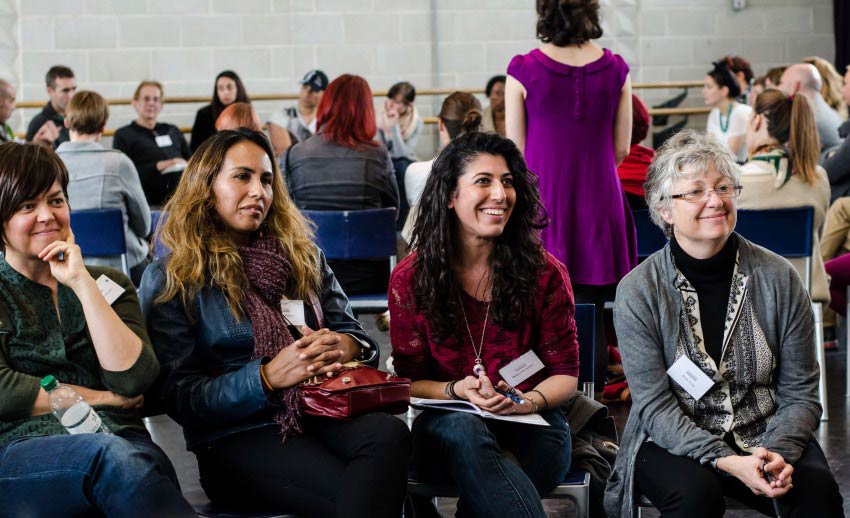
© Chantal Guevara. (Click image for larger version)
The conference content was decided by a voluntary steering committee, including Lucie Pankhurst, who also gave a talk on the difficulties of collaborating online: “You think of collaboration and you think of people wearing hessian. Someone is doing a knee bend, someone is banging a drum and someone is painting a picture. But really it’s a lot of sending emails.”
Olympic Opening Ceremony choreographers Temujin Gill, Sunanda Biswas and Eilidh Ross and Closing Ceremony Director Kim Gavin began by discussing the challenges of choreographing for London 2012. For Biswas, it was the mathematics of working with such a large group that provided the greatest challenge.

© Chantal Guevara. (Click image for larger version)
She and Gill choreographed the NHS dance sequence which involved 800 non-dancers and 400 children. “I spent ages working out how many nurses and children should push each bed! The volunteers took it very seriously. We were like counsellors sometimes. People were very precious about their particular beds and when things had to change, they would say, ‘if I have to move from bed 27, I’m quitting!’”
Choreographer of the multi-award-winning film Les Miserables, Liam Steel, spoke about his experiences of working on screen. “I said to the director [Tom Hooper] that the film will fail if it looks choreographed. And in order to achieve it not looking choreographed, every moment needs to be choreographed.”
Steel was on set 95% of the six months spent filming. “My friends said, ‘what did you actually do?’, but it was about staging each movement with the score. Every turn of a head or putting down of a glass had to be in time with the music.”
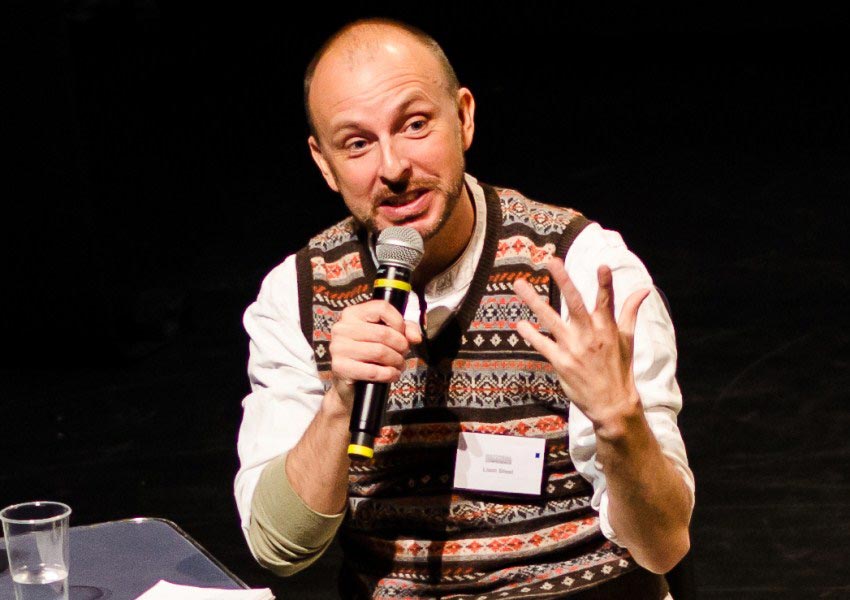
© Chantal Guevara. (Click image for larger version)
Steel also described the frustrations of not being in charge of the film editorial process. The ‘Lovely Ladies’ section of the film was changed repeatedly during rehearsal due to factors outside Steel’s control. “The dancers had to perform the dance over and over and their feet were bleeding. And not a bit of it went into the film! The film was amazing but it’s hard to let go of those creative choices.”
StopGap Director Lucy Bennett described her integrative approach, working with both disabled and non-disabled dancers. She chose the approach for “selfish and artistic reasons” and not because she wanted necessarily to change perceptions of disabilities. “I wanted to do something different. In StopGap, diverse people meet and they blend beautifully – or clash horribly – and that’s interesting. We’re not denying disability or sweeping it under the carpet but reaping its rich choreographic rewards.”

© Chantal Guevara. (Click image for larger version)
StopGap company dancer Laura Jones talked about her personal journey in dance, from loving classes at the age of four to suffering a spinal bleed and ending up paralysed from the waist down. “I thought I couldn’t dance. People always talk about dancers needing strength and flexibility – you have to be able to do the splits. What about stage presence? Or creativity?”
“I’m not going to be able to do the splits but I’ve got a whole range of other movements available to me. It’s not just about translating lower body movements to my upper body but about capturing the purpose, intention and feeling. It’s also not only translating movement ideas from non-disabled dancers to disabled dancers, but vice versa too. In one piece, my neck tension as I move my wheelchair became birdlike neck protrusions for other dancers.”
Charlotte Vincent, Director of Vincent Dance Theatre, discussed the lack of prominent female choreographers. “Why can’t we have two creative acts in tandem? Making babies and making work.”
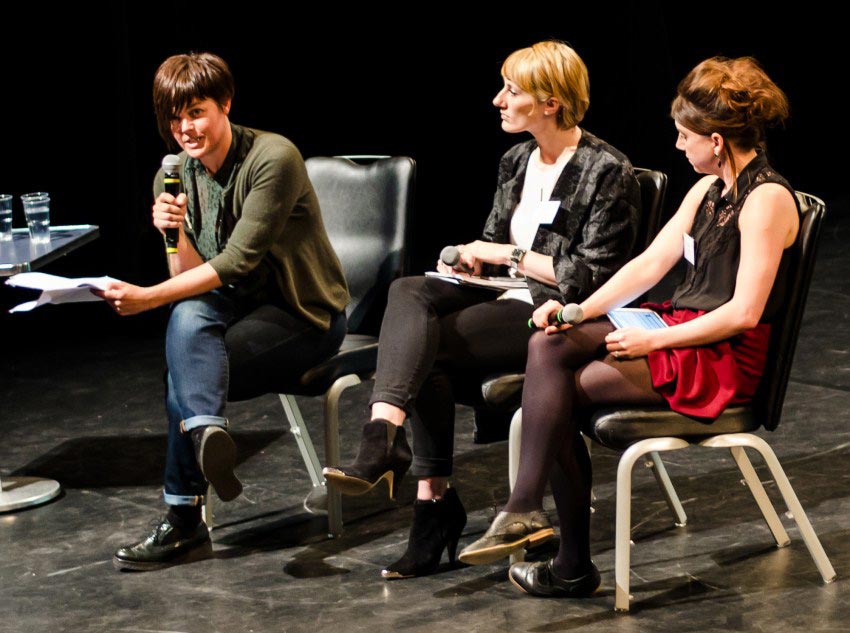
© Chantal Guevara. (Click image for larger version)
She described the many ways in which women may be marginalised in the dance world, for example when last-minute schedule changes affect childcare arrangements or touring isn’t family-friendly. She also described society’s “limited view of what makes a body beautiful” and the resultant effect of anorexia, delayed pregnancy and few (if any) “middle-aged, fleshy bodies” on show.
Shobana Jeyasingh, who spoke shortly afterwards, then opened her presentation by saying: “I had never thought being female and being a mother was a victory as a choreographer, but I guess it is.” Jeyasingh also described her choice in school between dance and cricket and how she found in dance “the power without words to create very special meanings. Only the text of the moving body can deliver that.”
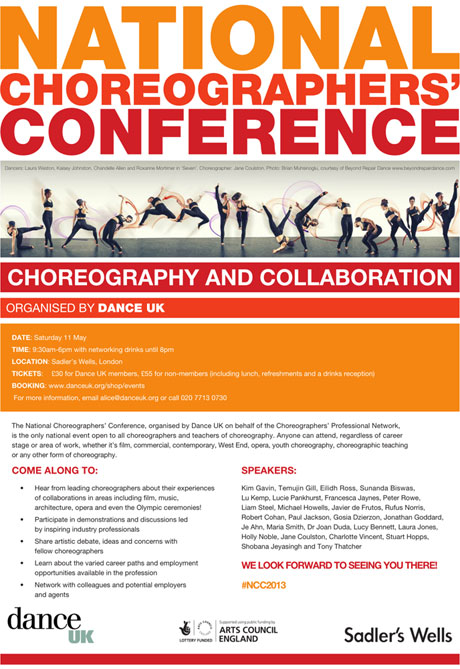
© Dance UK. (Click image for larger version)
or see the complete 3 page pdf version which includes the schedule for the day.
The conference ended with two performances by student choreographers from Trinity Laban. The first, Ghosts!2013 by Sivan Rubinstein, involved audience members sitting onstage with dancers in claustrophobically close proximity. The piece was a mixture of twisting, intimate duets and curious, aimless walking around the performance space.
An entirely different work, So, we made all the food mild, was created by Nina Berclaz from the same (unstated) initial stimulus. To electronic music and voiceovers describing the Queen in various situations (including visiting a curry house and hence the chef’s words that became the work’s title), two dancers – Samuel Kennedy and Gordon Douglas Raeburn – performed highly original movements including walking atop upturned mugs and alternating between heart-shaped hand gestures and middle finger cursing.
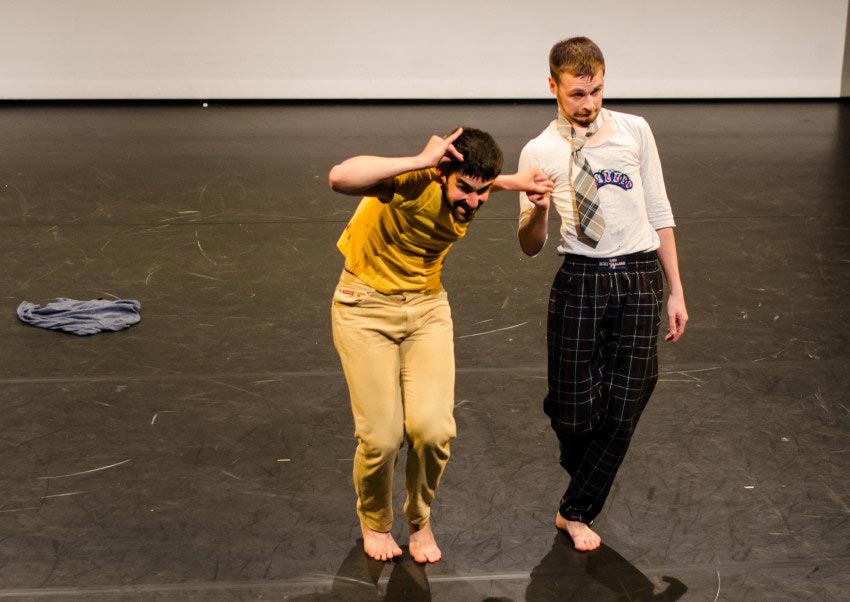
© Chantal Guevara. (Click image for larger version)
The conference continued well into the evening with networking drinks and lively chatter. Choreographer Rosie Whitney Fish described the day as “incredible. It left me buzzing with inspiration! Great speakers, discussion and debate.” Another participant stated: “It was not a valuable day: it was invaluable. Really inspiring and diverse speakers and a great opportunity to network and gather useful information.”
The idea behind the conference was not that every speaker would appeal to every attendee or that all the presentations would be of universal relevance. Dance UK wanted to highlight the many different ways of working within choreography and allow the speakers to share their fascinating and diverse stories in the hope that this would inspire attendees. I’m not a choreographer and I was exhausted after all the hard work involved during the day, but I did leave feeling thoroughly inspired.







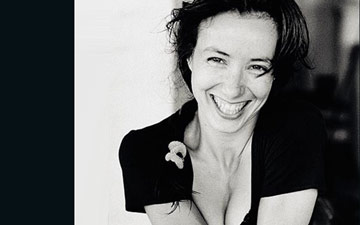

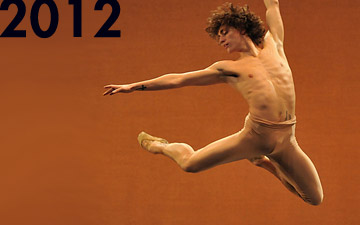
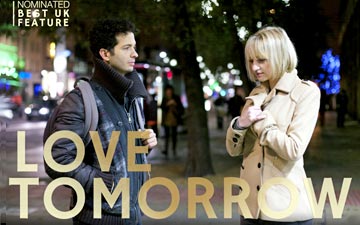
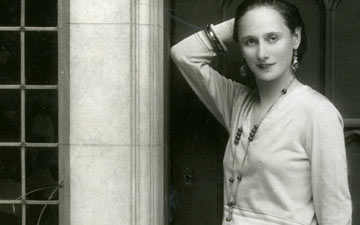

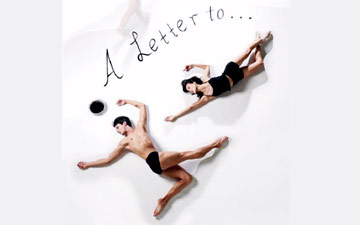
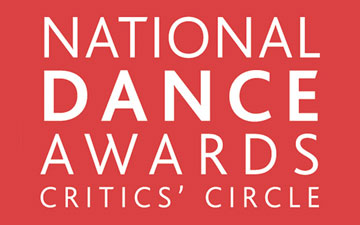
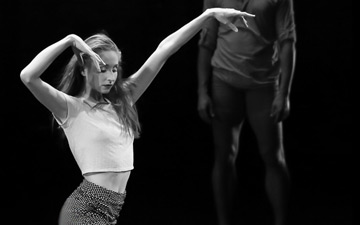
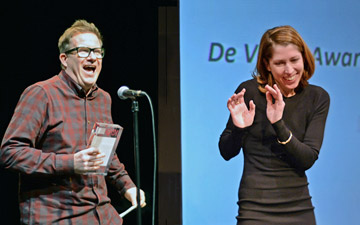
You must be logged in to post a comment.